Cool Trash Pocket Zine: Interview with Liz Zito

Humor, politics, and bedazzling collide in Liz Zito’s “cool trash life,” an ethos she shares with the world via her instagram, blog, performance and video work, and most recently, in “The Cool Trash Pocket Zine.” I’ve been a long-time admirer of the bravery with which she tackles difficult issues like rape culture, the male gaze, and mental health and sobriety, and I wanted to know more about what drives her creative process. She obliged, and her answers are as refreshingly candid, provocative and thoughtful as her work.
You’ve worked in video and performance for a long time, but recently you’ve been really focused on using those media to create content for instagram and for your blog, cooltrashlife.com. Tell me how the way the viewer interacts with those platforms integrates with the ethos behind your practice?
I never really thought my work was right for a gallery setting, even though every project is conceived with this as a possibility… but when you’re a creative and your iffy about the gallery world, it seems like the web and social media is the way to go, at least if you want people to see and react to what you’re thinking about. The instagram platform really lends itself to the low-res crappily collaged images and videos I’m interested in making now. I also really like the idea of something living in a moment and then forgotten… it allows me to be prolific and crank out as much nonsense as my fingers can muster. Its pressure free art making.
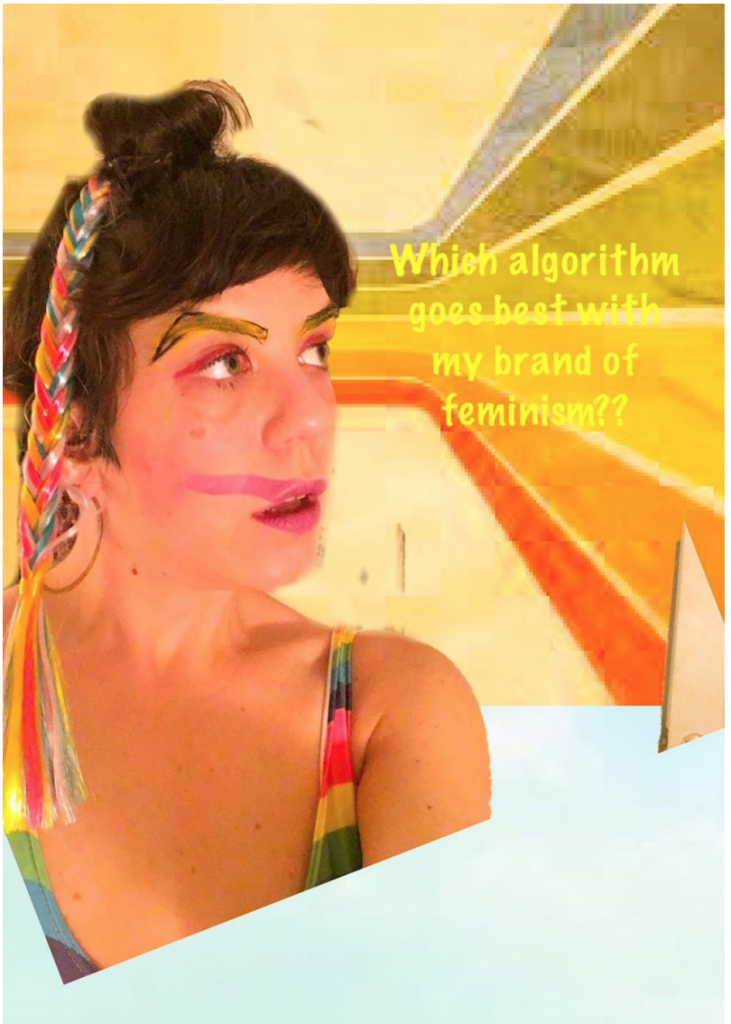
I want to know more about the relationship your work has to mass media and popular culture. It seems to be fairly complex.
I come from a fairly conservative background, I was raised Catholic and my hometown was pretty elitist. I learned a lot about the secular world from television and I have always been amused by pop culture (I’ve read the same celebrity blog D-Listed every day for like 8 years). I think I’ve been obsessed with the idea of rebellion since my childhood. I’ve spent years vocally rejecting the mainstream, but lapping up the material in secret. With pop culture and mass media, it’s almost like, you have to know your enemy well in order to defeat it. It’s a love/hate thing. The same thing rings true for Christianity… there are aspects I love that bring me great comfort, but overall the hatred that stems from conservatives is contradictory to the message and it makes me furious.
What is the “cool trash” lifestyle? Who and what inspires your aesthetic choices there?
Oh boy where to start… Well it all started with the name, “Cool Trash” is a reference from Jem and the Holograms, it was the name of gossip magazine from the show and I kinda clocked it in the back of my brain for a rainy day when I would need a name for a project. I’m inspired by a lot of the fashions in the Jem and the Holograms cartoon. The name is also an ode to John Waters, the king of trash. I’ve always related to his perversions, especially coming out of an upper-middle class suburb. But the project didn’t really come together until I became sober after a long battle with untreated mental health issues. Bouncing back from a truly dark place made me super grateful for ALL the creative and supportive humans in my life, but I really wanted to focus on my women. Around this time I became fascinated by the lifestyle blogs of the rich and blonde. I thought, if these women have any authority on how best to live life, then so do I. So I kind of split up the objective of the blog… I wanted one aspect to celebrate creative women in and out of their studios, and also to have a satirical absurdist side, where I discuss fake beauty tips and hygiene. In real life most people have a hard time telling whether or not I’m serious, I like this idea to transcend into the blog, to be genuine one moment and nonsensical in the next. It feels real to me.
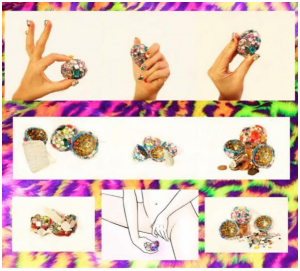
The Cool Trash lifestyle is really about creativity and subversion. Sometimes the act of just being honest is subversive. The women I have included in the blog thus far are subverting mainstream standards… Madeline grows her own food, Keri wheat-pastes large scale murals… these acts are brave and defiant and should be celebrated.
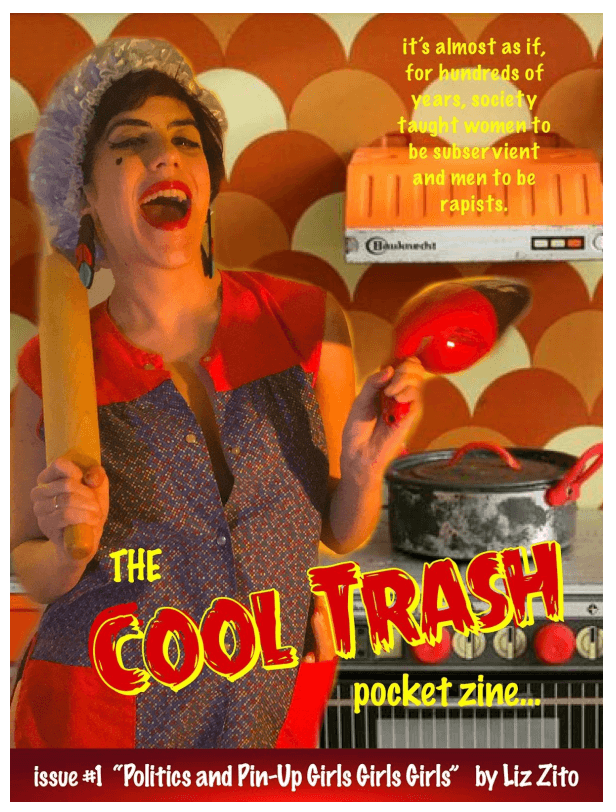
Recently Cool Trash has taken another turn with my first self-published zine. I’m super inspired by the band The Cramps, particularly the lead guitarist Poison Ivy. She modeled for most of their posters and album covers in a humorous and sexy burlesque fashion that I always found empowering rather than exploitative. I began working with a similar 1950’s pin-up magazine aesthetic in order to get some of my thoughts on contemporary issues across. I’ve recently been fueled by our societal reaction to the sexual assault allegations that have come forward in the media as well as the #MeToo and Times Up movements. Using a hashtag and wearing a pin does not a feminist make. I feel like people are really misinformed about the complexities of male and female power dynamics and listening to men try and make sense of it all makes me want to vomit. The cool trash zine is about channeling my anger at men, while acknowledging some simple truths about consent in a mildly aggressive tone. I think it’s important to note that I don’t hate men (i’ve had men ask me this before). After the violation of assault, there is a deep deep fear of men that never goes away. As a single cis woman, it’s a hard truth that I will forever struggle with trusting my male connections… doesn’t mean I can’t though.
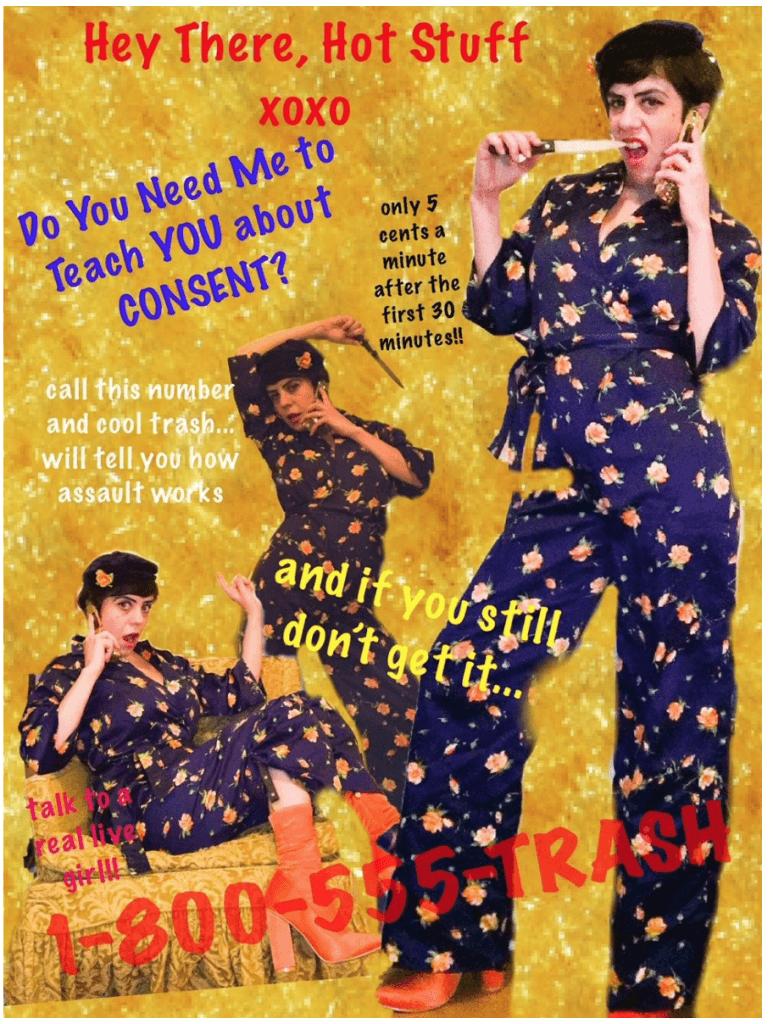
Some of your work is really personal and has the potential to leave you exposed and vulnerable–both physically and psychologically. How do you “close the circle,” and make sure that you end your process feeling positive, or at least moving in the direction of healing?
I’ve spent most of my life quiet and fucked up, and that didn’t really work… Being vocal about my fucked-up-ness has been totally freeing. Essentially it’s about control. I have worked hard to gain control over my issues and over my story. When you’ve been in a place of such deep self-hate, no one can say anything worse to you then what you’ve probably said to yourself. I’ve found my openness with this subject matter really connecting and I’ve grown closer to a lot of people because of it. But I think I should also acknowledge that the reach of my work is still on the smaller side… sometimes I feel like I only make work to share with my friends. If I had a larger audience I’m sure I would have to confront more complicated vulnerability issues.
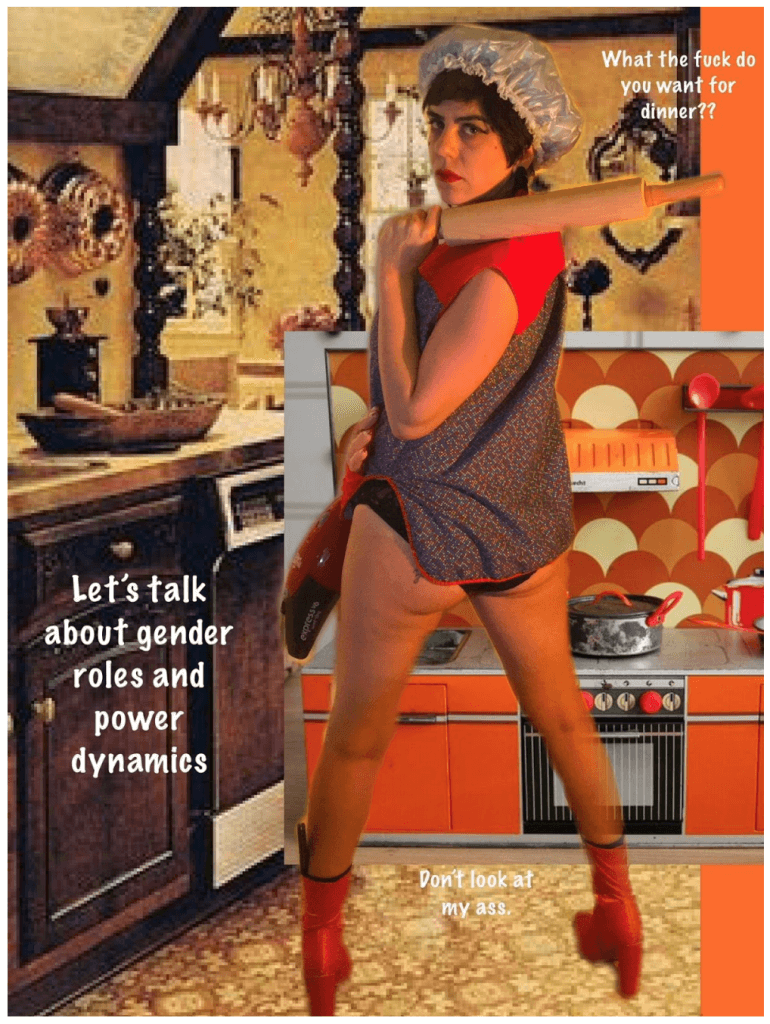

What is your relationship to ritual, Catholicism, magic, and esoteric traditions? I know that in past work you often took on the role of a witch, and I couldn’t help but notice the Ten of Swords and The Tower bedazzled on the jackets you made for “Zito’s Chapel,” a piece which also appropriated a lot of Catholic imagery.
Reclamation has been a big theme the past few years. I was raised to be a spiritual person but I did not connect with the judgmentalism and formality of the Catholic Church. Rather than hate on religion, I reclaimed it through appropriating different aesthetics and rituals with my own made up myths and beliefs. I started these ceremonies with my friend and collaborator Caryn Coyle, where we would write a spell or a mantra to give up a negative feeling we had about ourselves. If you asked the Goddesses for something, you have to help your community in a positive way in order for her to answer. The ten of swords and the tower jackets came from my birthday tarot read last year. Essentially they mean that things are gonna have to get real bad before they can get better… it was quite an accurate read at the time. In terms of Catholic imagery… I try and stay away from Jesus and the cross. In the Zito’s Chapel installation, the merman sorta takes center stage and I play the role of death (which is also life). I feel like we live in a time where people are desperate to connect with some sort of spiritual enlightenment because the world feels like its crumbling before our very eyes. With that installation, I wanted to create a familiar environment where all are welcome spend time and throw on some gems and feel fabulous… spirituality through community and acceptance. I’m not gonna lie, the recent MET Gala acted as the opposite of this idea for me, connecting Catholicism to elitism and unattainable celebrity, which is just a super flawed model in 2018 (although not un-historic). Spirituality should help people feel worth. People rely on the sacred nature of Catholicism and their spirituality to survive and lead full lives. It was hard to watch the MET shit all over that.
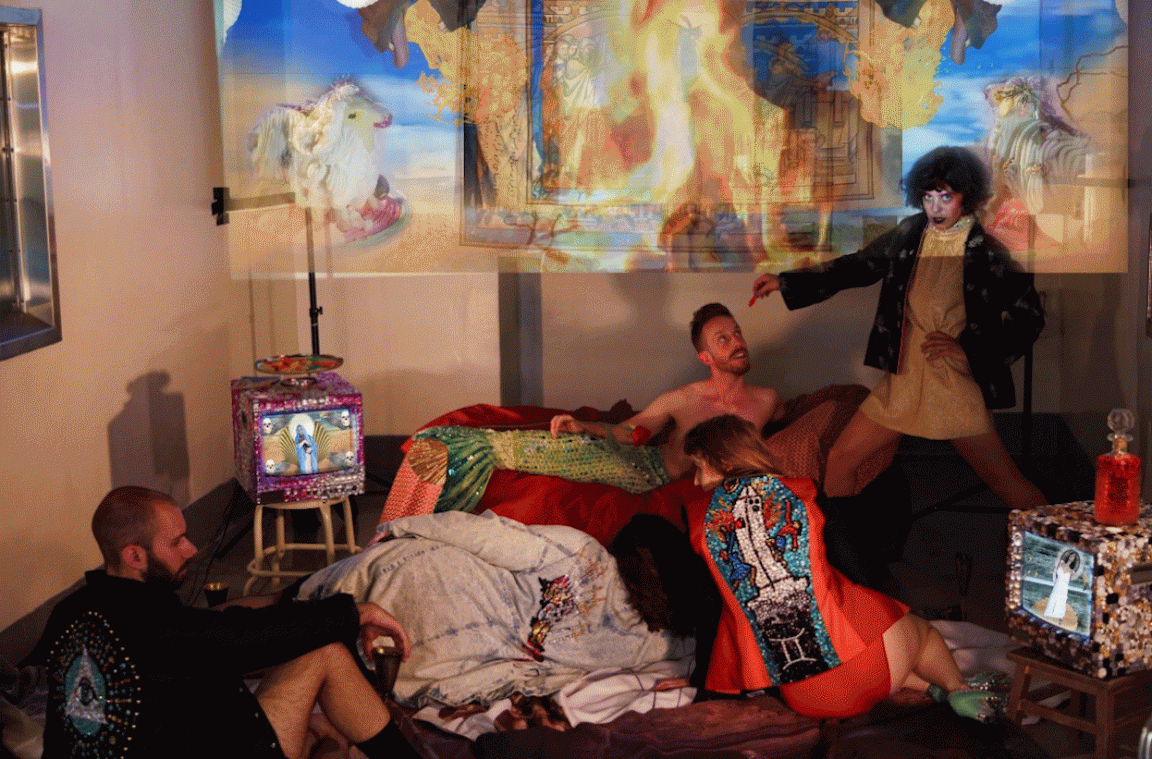
You use your body in your work. Please talk about the decisions you make when doing so, and how it relates to your identity as a feminist, and your politics as an image-maker.
I also think this has to do with control. I know what I am capable of, I know how to use my body (i have a background in vaudeville and physical comedy). I don’t think I would feel comfortable asking anyone else to do the things I do. But I also like the idea of making or doing something that no one else but the camera is around for. When I collaborate with others, I always work with their strengths and ideas. I’m all about making people feel either very comfortable or uncomfortable. Lately I’ve been showing a lot more of my body with the pin-up shoots… admittedly this came after I lost 45 pounds from getting mentally healthy and sober, so I am not unphased by societal body image standards… but it also came as a response to my Grandma’s death. Looking through her things we found a significant amount of pin-up-like staged pictures she had professionally taken, most likely to send to my Grandpa while he was overseas during WWII. This was a secret side to my Grandma, who I was deeply connected to, it inspired me to re-interpret the formulaic use of the female body as an object of desire particularly in the history of advertising.
Make-believe, dress up, collaboration, humor, and sparkly things all play a core role in your practice. Has it always been that way for you, or has embracing a child-like attitude of play been a process? What do you get out of it, and do you think you would push it even further?
Oh, I was a very formal oil painter in college (I still love to paint when I can), but the work was about portrait painting and there was no real strong concept behind it. I think joining a burlesque troupe and focusing on vaudeville changed all that and got me out of my painting shell. The idea of play came with those performances and the videos I began making because of them. When I moved to NYC for grad school things got a lot sparklier, mainly because of my community. I had a stressful childhood and I think I enjoyed playing as an adult in ways that I couldn’t as a child. Humor is a blessing and a curse… sometimes I can really crack myself up, like for hours, with a project. But other times I suffer from the pressures of the expectation to be funny, which also fuels my reclusiveness. Social Media and blogs can be great platforms for work, but can also promote isolation. Making work solely on my phone for the past 8 months has been a strange experience. I’m ready to get tactile again. I guess the next step is taking my images out of world wide web. A friend recently suggested I put my work on a billboard for a week. I’m dying to sticker the NYC subway system, and I’ve always loved the idea of turning some videos of mine into pop-ups on porn sites. I am also interested in some interactive sculpture that reflects aspects of emerging female sexuality. I’m excited to see what strange places I can show my work and who it may reach… and more importantly, document it and post it on instagram or it didn’t happen 🙂
Responses